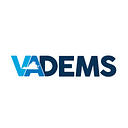Using Technology to enhance campaigns is a priority of the DPVA
Boosting Off-Year Election Voter Turnout: eAbsentee Ballot Case Study
Surovell Campaign Boosted SD-36th District Performance
Winning a competitive campaign requires a strategy that encompasses the full array of tools to boost turnout. Unfortunately, campaigns often lack sufficient evidence in new or emerging tools to properly allocate scarce resources, a particularly acute concern in close races. Since 2007, a total of 11 State Senate and 61 Delegate races were decided in less than 2,000 votes.
Sensing an opportunity to flip such close races, State Senator Scott Surovell (D-Fairfax) incubated a trial program to test a hypothesis involving one emerging tool — the ability to request an absentee ballot electronically. The results should inform DPVA candidates’ strategies for off-year elections — the strategy accounted for nearly 20% of absentee ballots cast, a 4x growth among those less likely to vote, and a 2x advantage in net votes gained against Republicans.
As background, a May 2015 ruling by the State Board of Elections allowed electronic signatures on absentee ballot applications.[1] The ruling came at the request of House Speaker William Howell (R-Stafford) who wanted to set up a website for Republican primary voters to submit absentee ballot requests. This development simplified the process for eligible voters to complete the entire form online and, in doing so, bypass the onerous process of printing out the form, signing it, and then either mailing, scanning, faxing or emailing it to their local registrar.
With financial support from the Innovative Virginia Fund (established by former LG candidate Aneesh Chopra) and technical support from Waldo Jaquith (open data evangelist), Surovell built upon this ruling by designing a campaign strategy to boost absentee ballots in key SD-36 precincts (the 36th District runs from Mt. Vernon to North Stafford County, covers areas with some of the longest commutes in the United States, contains large numbers of younger, lower income, minority, immigrant, and transit-dependent voters with multiple jobs). He theorized that many voters would be willing to vote by mail if the application process was simplified.
The results validated key hypotheses, and offer areas for further consideration in the election cycles ahead. Three key takeaways share the story:
· The e-absentee program accounted for nearly 20% of all absentee ballots cast in the race, boosting overall absentee ballots 20% from 2011 levels (1994 ballots cast in 2015 vs. 1646 in 2011);
· The highest performing segment of participants were voters deemed less likely to vote (a DPVA turnout score <40) — a 4x improvement in voter turnout (e-absentee participants voted 47.4% vs. 11.3% in the overall population);
· Democrats delivered a 2x improvement in net absentee votes cast since 2011 relative to Republicans (Democratic edge of 259 in 2011 jumped to 742 net votes in 2015).
The current “DemocraticAbsentee.com” open-source resource which offers canvassers the ability to collect all of the information required by the absentee ballot request form, convert the data into a PDF file auto-submitted via email to the appropriate registrar, and record pertinent data in a daily report, is transitioning to the DPVA to be made more widely available as a resource for all candidates.
Areas of improvement include improving the current “time to file” an absentee ballot request as it currently stands under two minutes with better VAN integration; further refinement of the right target audience — building upon Surovell’s success focusing on low-propensity voters; the need to close the gap in converting voters at the door between the candidate and field staff; training on the right market message — less on “absentee ballot” and more on “vote by mail;” strengthening a “chase” program built into the VAN; and improving the look and feel of the tool itself.
The DPVA Tech & Innovation Committee is committed to build upon this progress, and further field testing of new and emerging campaign strategies that can boost Democratic performance, especially in off-year elections. Please join us to scale up this important endeavor!
About the DPVA Tech Innovation Council
Started in May 2016 by Aneesh Chopra and DPVA Vice-chair for Tech Dave Leichtman, the Tech Innovation Council seeks to bring together tech community leaders in support of the Party. With insider events and updates, the Tech Innovation Council solicits ideas and best practices from those who know tech best and helps reincorporate them into campaign infrastructure. The group also works to raise money to expand tech-oriented campaign efforts like the E-absentee program. To join today, email info@vademocrats.org.
